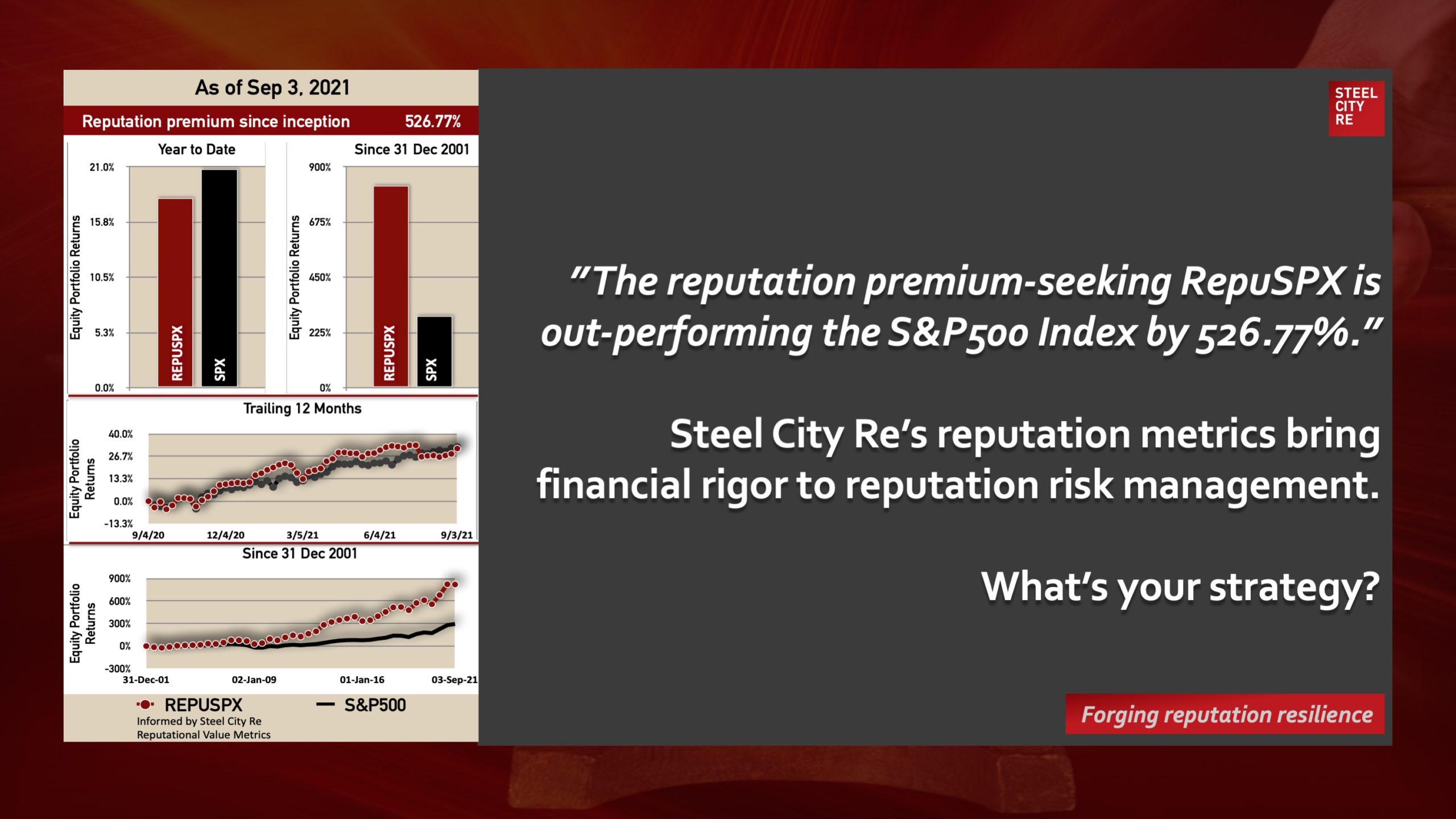“As of Sept 3, 2021, the RepuSPX reputation premium-seeking equity portfolio, refreshed annually, is out-performing the S&P500 Index by 526.77%.”
September 4, 2021
RepuStars
Steel City Re’s technology-driven quantitative rigor has been proven effective by financial markets in both insuring and arbitraging reputation risk.
Reputation value is a strategic power. Companies harness their reputation to sell more, faster, and at premium prices; and to obtain labor, vendor services, as well as capital on preferred terms. Enhanced reputational value can help companies outperform competitors, recruit and retain talent, deter activists, and satisfy regulators. That extra value is the reputation premium. A reputation valuation framework like ours, informed by behavioral economic principles, is especially useful in ESG-centric firms because the analytic processes align with institutional investors’ expectations and proxy voting guidelines.
Risk management, risk financing in insurance captives, and risk transfer through reputation insurances comprise the constituent elements of a comprehensive reputation risk management solution. These seven (7) basic videos explain why and how.
Reputation is Mission-Critical
Mitigating the Hazards of ESG-Linked Enterprise Risk. A management program for ethics and compliance can forestall prosecution and mitigate fines. Similarly, oversight of “mission- critical” issues can forestall securities litigation. A program for reputation resilience, comprising both risk management and insurance (reinsurance)-authenticated oversight for all that is mission-critical, can create value in many ways. To this end, Steel City Re offers a Reputation Resilience Program.
Having a robust Reputation Resilience Program in place offers, amongst other benefits:
- Protection for the company, its staff, executives, and board from litigation and regulatory challenges
- Improved governance processes and better enterprise risk management protocols; i.e., measuring reputational risk
- Establishment of an agile operating, communications, and decision-making team, with clear roles and responsibilities, trained and ready to handle all reputational threats; i.e., a reputation risk management framework
- Proactive management of risks that could give rise to delays or derailing concerns around new product and strategic partnership launches
- Captured behavioral economic value from stakeholders; i.e., value of reputation
- Reduced costs of debt and risk transfer while boosting equity value; i.e., boosting reputational value
A hazard of reputation risk is a lurking gap between stakeholder expectations and reality. Another hazard is the emotional intensity associated with expectations. The peril is anger from disappointed stakeholders. This video and this written summary explain the behavioral economic features of the many perils of reputation risk.
Mitigating risk strategically through expectation management and operational adjustments evinces thoughtful management and dutiful governance. Financing such risks evinces prudence, and doing so publicly enables stakeholders to appreciate and value the effort. These comprise the core of Steel City Re’s professional services.
One Question
Mitigating the Hazards of ESG-Linked Enterprise Risk. ESG-linked reputation risks are prevalent and material. Are reinsurance and insurance for ESG-linked reputation risk part of your strategy?

